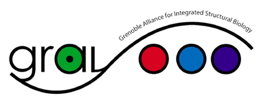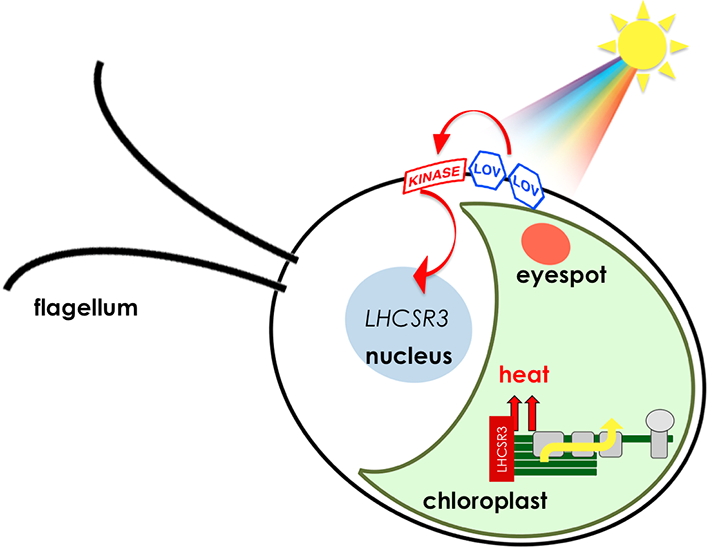Industrial partners and ongoing fundings
Published on 5 January 2019
Body text 1
 Industrial partners
Industrial partners
 Ongoing fundings
Ongoing fundings

 Total Energies Nouvelles
Total Energies Nouvelles

 Human Frontier Science Program (Public abstract)
Human Frontier Science Program (Public abstract)
 Photosynthetic organisms must balance optimization of photosynthesis while minimizing photo-oxidative damage. In low light, excitation energy is collected to fuel CO2 fixation, while excess photons are de-excited in high light to avoid photodamage. Despite extensive studies of these phenomena, the mechanisms governing light use in plants are still poorly understood. We have recently shown that ion fluxes control plant light responses. K+ channels regulate the chloroplast proton motive force (pmf) by counterbalancing the H+ gradient with K+ flux. This affects light harvesting and dissipation and CO2 assimilation. Here, we propose to explore this entirely new research field (optimizing photosynthesis via ion flux) in algae (C. reinhardtii), mosses (P. patens, M. polymorpha) and plants (A. thaliana). Owing to complementary expertise in our team (electrophysiology, spectroscopy, bioinorganic chemistry and molecular genetics) we will investigate the function of the putative chloroplast ion channels, generate down-regulated mutants, characterize their function in vitro (electrophysiology) and in vivo (Stark spectroscopy) and collate their phenotype to ion dynamics in vivo using customized imaging probes.
Photosynthetic organisms must balance optimization of photosynthesis while minimizing photo-oxidative damage. In low light, excitation energy is collected to fuel CO2 fixation, while excess photons are de-excited in high light to avoid photodamage. Despite extensive studies of these phenomena, the mechanisms governing light use in plants are still poorly understood. We have recently shown that ion fluxes control plant light responses. K+ channels regulate the chloroplast proton motive force (pmf) by counterbalancing the H+ gradient with K+ flux. This affects light harvesting and dissipation and CO2 assimilation. Here, we propose to explore this entirely new research field (optimizing photosynthesis via ion flux) in algae (C. reinhardtii), mosses (P. patens, M. polymorpha) and plants (A. thaliana). Owing to complementary expertise in our team (electrophysiology, spectroscopy, bioinorganic chemistry and molecular genetics) we will investigate the function of the putative chloroplast ion channels, generate down-regulated mutants, characterize their function in vitro (electrophysiology) and in vivo (Stark spectroscopy) and collate their phenotype to ion dynamics in vivo using customized imaging probes.

 Grenoble alliance for structural biology funding (GRAL)
Grenoble alliance for structural biology funding (GRAL)
 Project title: ChlamyPHOT. Gene expression control by the blue light photoreceptor phototropin in Chlamydomonas.
Project title: ChlamyPHOT. Gene expression control by the blue light photoreceptor phototropin in Chlamydomonas.
Funding: LabEx GRAL (ANR-10-LABX-49-01); 120 K€ for 24 months.
Project Leader: Dimitris PETROUTSOS, iRTSV/PCV/LP&M
Collaborations: Myriam FERRO and Marianne TARDIF (our institute, BGE laboratory, EDyP team), Chloe ZUBIETA (our laboratory, MADS team); Martin BLACKLEDGE (IBS), Laurent BLANCHOIN (our laboratory, PhysCyto team), Marco POLIN (Warwick, UK).
 Photosynthetic organisms use light as source of information, perceived by photoreceptor proteins, and as source of energy to perform photosynthesis. However, excess light can cause severe oxidative damage and result in cell death. To avoid this a sophisticated photo-protective mechanism has been evolved, that dissipates the excess light energy as heat. In the green algae Chlamydomonas this mechanism relies on the protein LHCSR3, a nuclear-encoded chloroplast localized protein, induced by high light. The signal transduction process that controls the expression of LHCSR3 is largely unknown. In our laboratory, in collaboration with Japanese and German colleagues, we have discovered that LHCSR3 in Chlamydomonas is under control of the blue light photoreceptor phototropin.
Photosynthetic organisms use light as source of information, perceived by photoreceptor proteins, and as source of energy to perform photosynthesis. However, excess light can cause severe oxidative damage and result in cell death. To avoid this a sophisticated photo-protective mechanism has been evolved, that dissipates the excess light energy as heat. In the green algae Chlamydomonas this mechanism relies on the protein LHCSR3, a nuclear-encoded chloroplast localized protein, induced by high light. The signal transduction process that controls the expression of LHCSR3 is largely unknown. In our laboratory, in collaboration with Japanese and German colleagues, we have discovered that LHCSR3 in Chlamydomonas is under control of the blue light photoreceptor phototropin.
ChlamyPHOT is an innovative collaborative project that combines cell biology, molecular physiology, genetics, structural biology and biophysics to study the unexplored mechanisms that link light perception and photo-protection at the molecular and cellular level. ChlamyPHOT will support a two-year Postdoc contract with bench fees.

 AccliPhot (Web site)
AccliPhot (Web site)

AccliPhot is a Marie Curie Initial Training Network funded by the European Commission. The project has started on the 1st October 2012. The main research aim of AccliPhot is to investigate and understand short-term acclimation mechanisms to changes in light conditions in photosynthetic organisms. We study acclimation processes on various scales with experimental and theoretical methods. The investigated scales encompass the molecular signalling mechanisms inducing the responses, the implications for metabolism, and whole-organism behaviour, in particular growth and biomass yield. Our aim is to employ this understanding to optimise and upscale biotechnological exploitation of photosynthetic microalgae for the production of biofuels and high-value commodities.
Top page